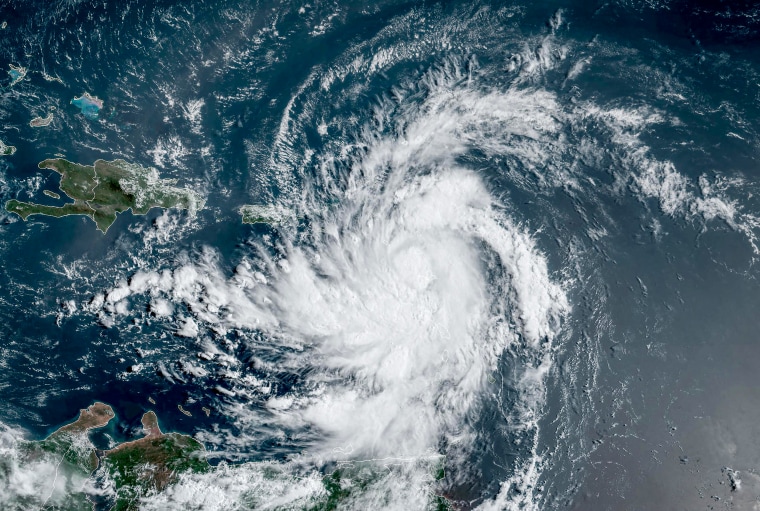Tropical Storm Ernesto was passing by Puerto Rico late Tuesday with 65 mph winds, but it is forecast to strengthen into a hurricane Wednesday morning as it moves by the U.S. territory.
The storm was about 60 miles east-northeast of San Juan at 11 p.m. Atlantic Standard Time, and it was moving northwest at 17 mph, the National Hurricane Center said in a bulletin.
The maximum sustained winds of 65 mph were 9 miles per hour shy of the 74 mph threshold for a Category 1 hurricane on the Saffir-Simpson Hurricane Wind Scale. The storm will likely become a hurricane early Wednesday, the hurricane center said.
“As Ernesto pulls out into the open waters of the Western Atlantic, it will strengthen significantly — potentially becoming a powerful hurricane,” National Hurricane Center Deputy Director Jamie Rhome said Tuesday evening.
The storm's center is forecast to pass by Puerto Rico Wednesday and then have a gradual decrease in its speed, according to the weather agency.
Puerto Rico Gov. Pedro Pierluisi on Tuesday urged people to not leave their homes after 6 p.m. because of storm conditions.
Officials also anticipated widespread power outages across the island, as Puerto Rico's electric grid has not been permanently rebuilt since Hurricane Maria razed it in 2017.
Vieques and Culebra, the island-municipalities about 7 miles off Puerto Rico’s eastern coast, had been placed under a hurricane warning, said Ernesto Rodríguez, director of the National Meteorological Service in San Juan, during the news conference.
"We must not let our guard down," Rodríguez said.
A hurricane watch was also issued for the U.S. and British Virgin Islands. The watch remained in effect late Tuesday.
The storm will move across the western Atlantic later in the week.

Ernesto could produce storm totals of 4 to 6 inches of rain over the U.S and British Virgin Islands, and up to 10 inches of rain in southeastern Puerto Rico, the National Hurricane Center said. Northwestern Puerto Rico was forecast to see a storm total of 2 to 4 inches.
The size and potential power of storm if it does strengthen into a powerful hurricane means that beachgoers in the continental United States could be affected.
Late Tuesday, tropical-storm-force winds extended outward from the storm's center by up to 125 miles, and that was as a tropical storm, according to the hurricane center.
The eastern coast of the U.S., even though far from the storm’s center, could see dangerous rip currents later this week and into the weekend, Rhome, the deputy director of the agency, said Tuesday.
A storm surge of 3 feet could be seen in the U.S. and British Virgin Islands, the hurricane center said.
Puerto Rico activated the National Guard and canceled the start of classes in public schools, The Associated Press reported.


